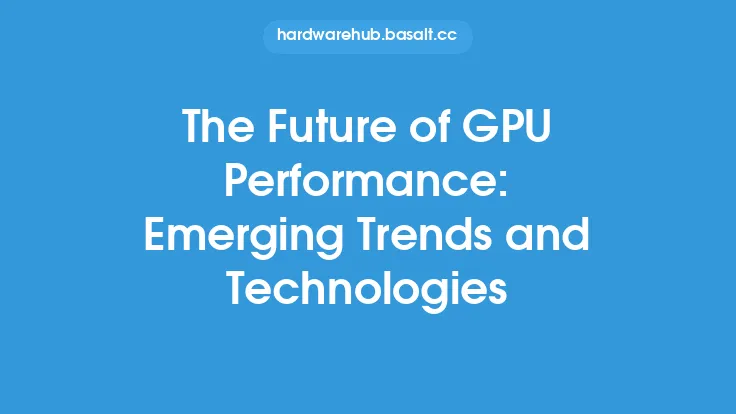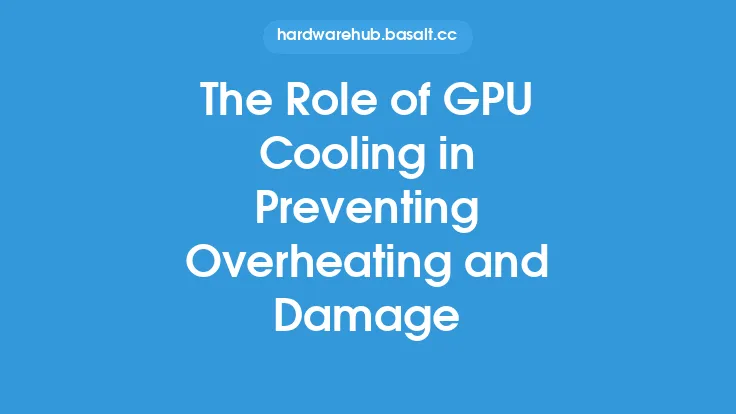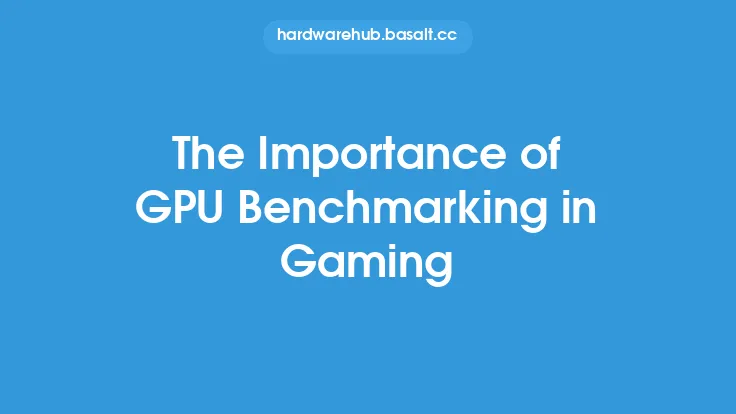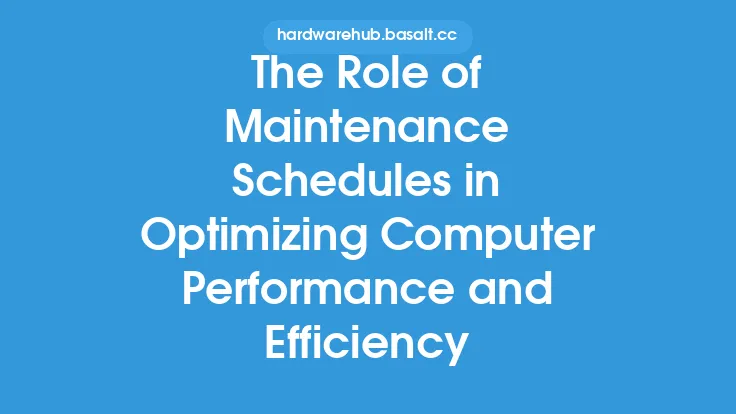The increasing importance of machine learning and artificial intelligence in various industries has led to a growing demand for high-performance computing systems. At the heart of these systems are Graphics Processing Units (GPUs), which have become a crucial component in the development and deployment of machine learning and AI models. In this article, we will delve into the role of GPU performance in machine learning and AI, exploring the technical aspects of how GPUs contribute to the acceleration of these workloads.
Introduction to Machine Learning and AI Workloads
Machine learning and AI workloads involve complex mathematical computations, such as matrix multiplications, convolutions, and recursive neural network operations. These computations require massive amounts of data to be processed in parallel, making GPUs an ideal choice for accelerating these workloads. GPUs are designed to handle large amounts of parallel processing, with thousands of cores that can perform calculations simultaneously. This is in contrast to Central Processing Units (CPUs), which are designed for serial processing and are limited in their ability to handle parallel workloads.
GPU Architecture and Machine Learning
The architecture of modern GPUs is well-suited for machine learning and AI workloads. The key components of a GPU include the CUDA cores (in NVIDIA GPUs) or Stream processors (in AMD GPUs), which are responsible for executing instructions and performing calculations. The memory hierarchy of a GPU, which includes the register file, shared memory, and global memory, plays a critical role in determining the performance of machine learning and AI workloads. The register file and shared memory provide low-latency access to data, while the global memory provides high-bandwidth access to large datasets.
GPU Performance Metrics for Machine Learning
When evaluating the performance of a GPU for machine learning and AI workloads, several metrics are important to consider. These include the floating-point operations per second (FLOPS), memory bandwidth, and memory capacity. FLOPS measures the number of floating-point operations that can be performed per second, which is a key indicator of a GPU's ability to handle complex mathematical computations. Memory bandwidth measures the rate at which data can be transferred between the GPU and system memory, which is critical for workloads that involve large datasets. Memory capacity measures the amount of memory available on the GPU, which is important for workloads that require large amounts of data to be stored and processed.
GPU Acceleration of Machine Learning Algorithms
GPUs can accelerate a wide range of machine learning algorithms, including deep learning, natural language processing, and computer vision. Deep learning algorithms, such as convolutional neural networks (CNNs) and recurrent neural networks (RNNs), are particularly well-suited for GPU acceleration. These algorithms involve complex matrix multiplications and convolutions, which can be performed efficiently on a GPU. Natural language processing algorithms, such as language models and machine translation, also benefit from GPU acceleration, as they involve large amounts of text data that need to be processed in parallel. Computer vision algorithms, such as object detection and image segmentation, can also be accelerated on a GPU, as they involve complex image processing operations.
GPU Performance Optimization for Machine Learning
To optimize GPU performance for machine learning and AI workloads, several techniques can be employed. These include data parallelism, model parallelism, and pipeline parallelism. Data parallelism involves dividing the data into smaller chunks and processing each chunk in parallel across multiple GPUs. Model parallelism involves dividing the model into smaller components and processing each component in parallel across multiple GPUs. Pipeline parallelism involves breaking down the computation into a series of stages and processing each stage in parallel across multiple GPUs. Additionally, techniques such as batch processing, gradient accumulation, and mixed precision training can also be used to optimize GPU performance for machine learning and AI workloads.
Real-World Applications of GPU-Accelerated Machine Learning
GPU-accelerated machine learning has a wide range of real-world applications, including image and speech recognition, natural language processing, and autonomous vehicles. Image and speech recognition algorithms, such as those used in virtual assistants and self-driving cars, rely heavily on GPU acceleration to perform complex computations in real-time. Natural language processing algorithms, such as those used in language translation and text summarization, also benefit from GPU acceleration, as they involve large amounts of text data that need to be processed in parallel. Autonomous vehicles, such as self-driving cars and drones, rely on GPU-accelerated machine learning algorithms to perform complex tasks such as object detection, tracking, and motion forecasting.
Conclusion
In conclusion, GPU performance plays a critical role in the development and deployment of machine learning and AI models. The architecture of modern GPUs, with thousands of cores and a complex memory hierarchy, makes them well-suited for accelerating complex mathematical computations involved in machine learning and AI workloads. By understanding the technical aspects of GPU performance and optimization techniques, developers and researchers can unlock the full potential of machine learning and AI and drive innovation in a wide range of fields. As the demand for high-performance computing systems continues to grow, the importance of GPU performance in machine learning and AI will only continue to increase, driving the development of new and innovative technologies that can accelerate these workloads.





